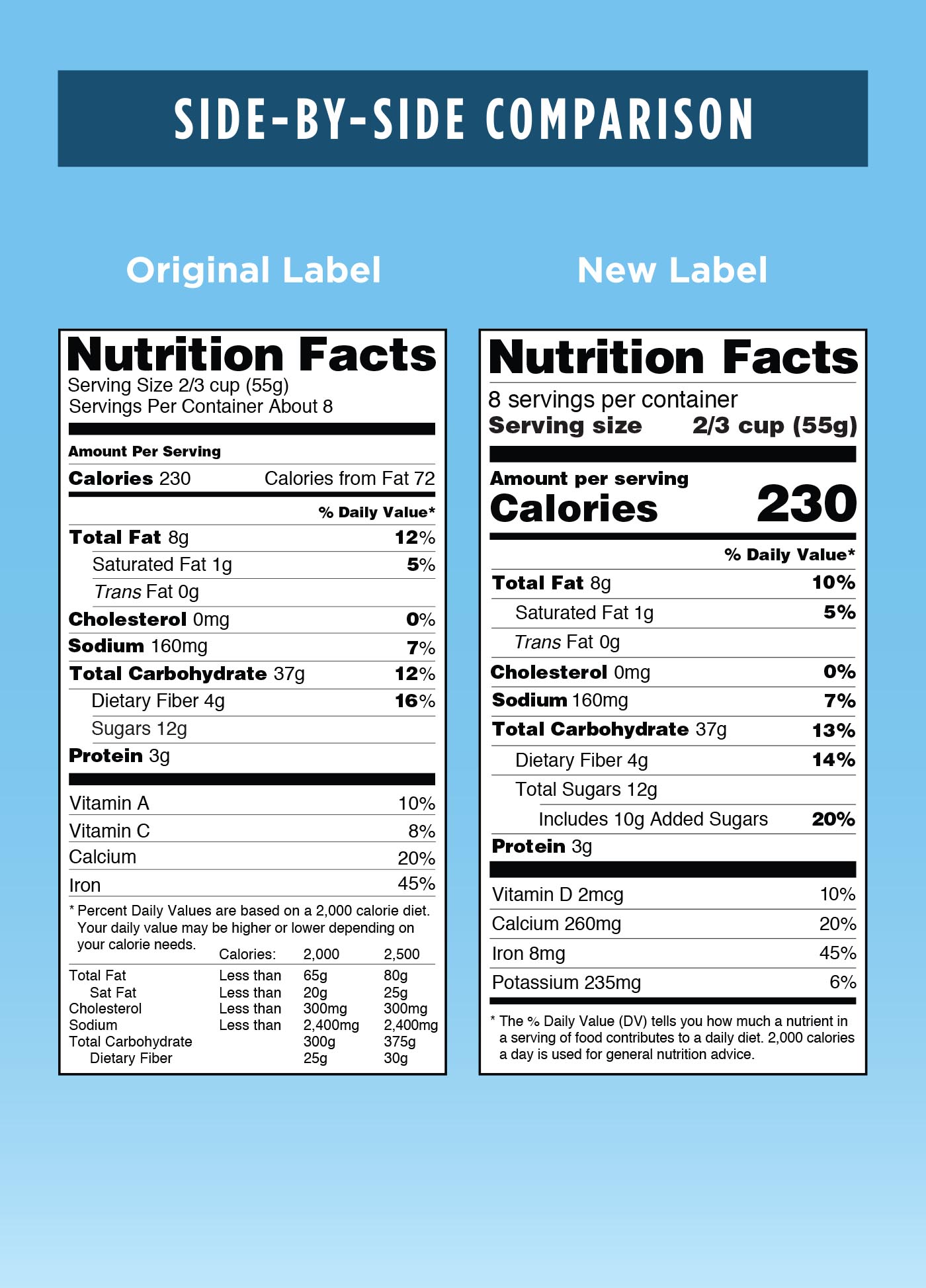If you’re a nutrition label reader (and we hope you are), you’ve probably already noticed some changes in the way those labels look. In 2016, the Food and Drug Administration announced required changes to the nutrition labels on food products. The rule was originally set to go into effect this past July for large food producers and next July (2019) for smaller producers. This summer the FDA pushed those deadlines out giving both an extra year and a half to make changes to their nutrition labels.
For consumers, it means we’ll see more of the new labels as the deadlines loom. But how do those changes affect your eating habits and conditions like diabetes?

Servings
Have you ever read the suggested serving size for a bowl of cereal and then measured it out? Didn’t fill up your bowl as much as you’d like, did it? The FDA discovered many suggested servings were not what a typical American actually eats. In the latest nutrition label update, food producers are including serving sizes more in line with typical American consumption. That means the calories per serving on some of your favorite foods may go up due to a larger expected serving size.
Calories
No more having to hunt around for your reading glasses to figure out how many calories are in your salad dressing. On the new labels, calories receive a larger and bolder font!
Fats
Avocado, fish and nut lovers rejoice! Calories from fats have been removed from nutrition labels because we’ve discovered it’s more about the kind of fat in a food than how much. It’s still important to pay attention to the amount and kind of fats in the foods you eat, but that information is readily available on a line all by itself.
Sugars
Not all sugars are created equal. Fruits and vegetables with naturally occurring sugars also come with the benefits of fiber and protein. The sugar everyone needs to reduce is added sugar, which now has its own line. Under Total Carbohydrates, you’ll now find Total Sugars and Added Sugars lines. This designation allows all consumers to make better choices between products with a lot of added sugar and those with very little.
Nutrients
Current nutrition labels list the amount of vitamins A and C in a product. Deficiencies in those vitamins are rare these days, which renders that information much less important than information about vitamin D and Potassium, two vitamins of which Americans often do not get enough. Calcium and Iron numbers will remain alongside the new vitamin D and Potassium in an actual amount and percentage of daily recommended value.
If you’re having trouble reading labels to manage your nutrition for diabetes or other chronic health conditions, contact our providers to discuss ways to better manage your diet and improve your health.



Speak Your Mind